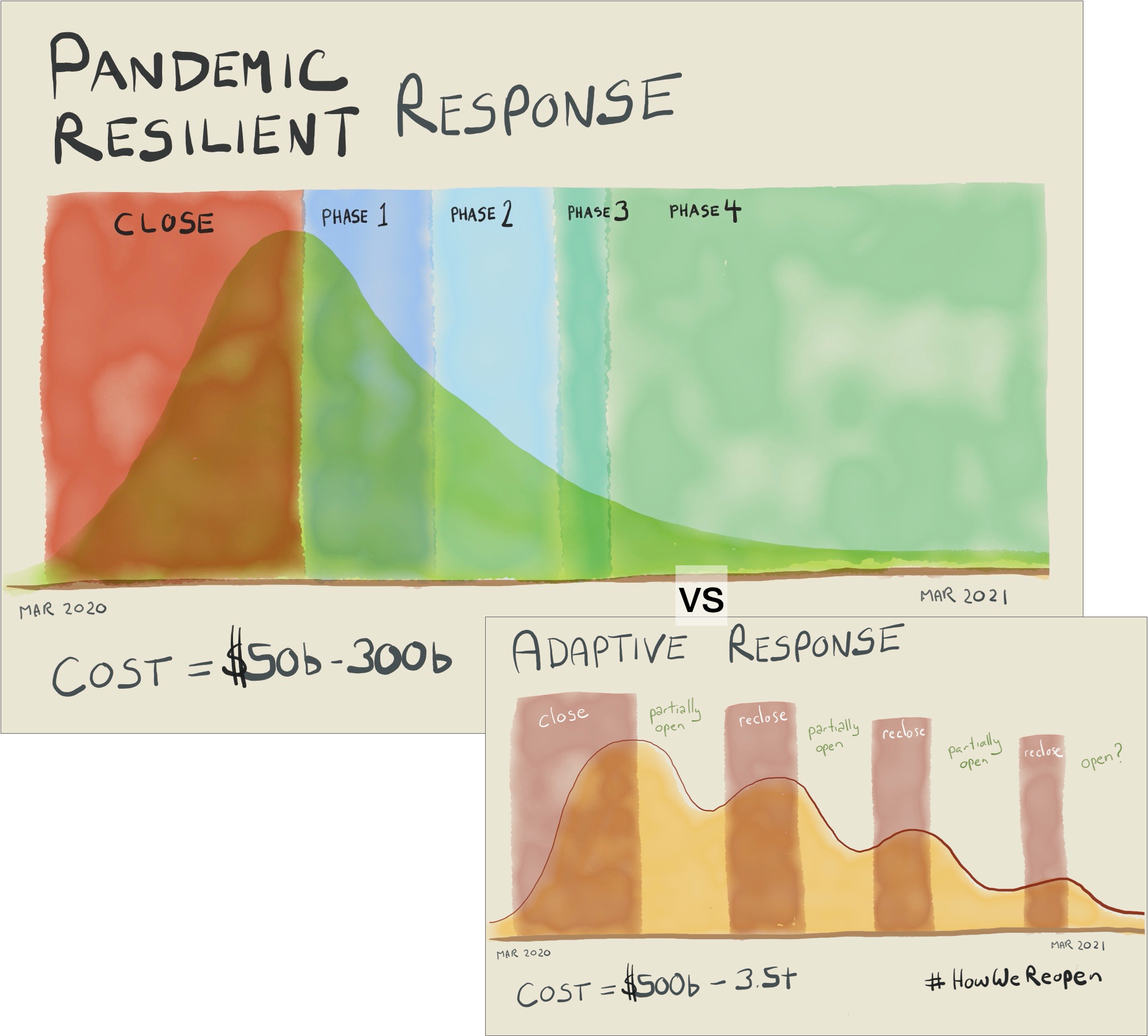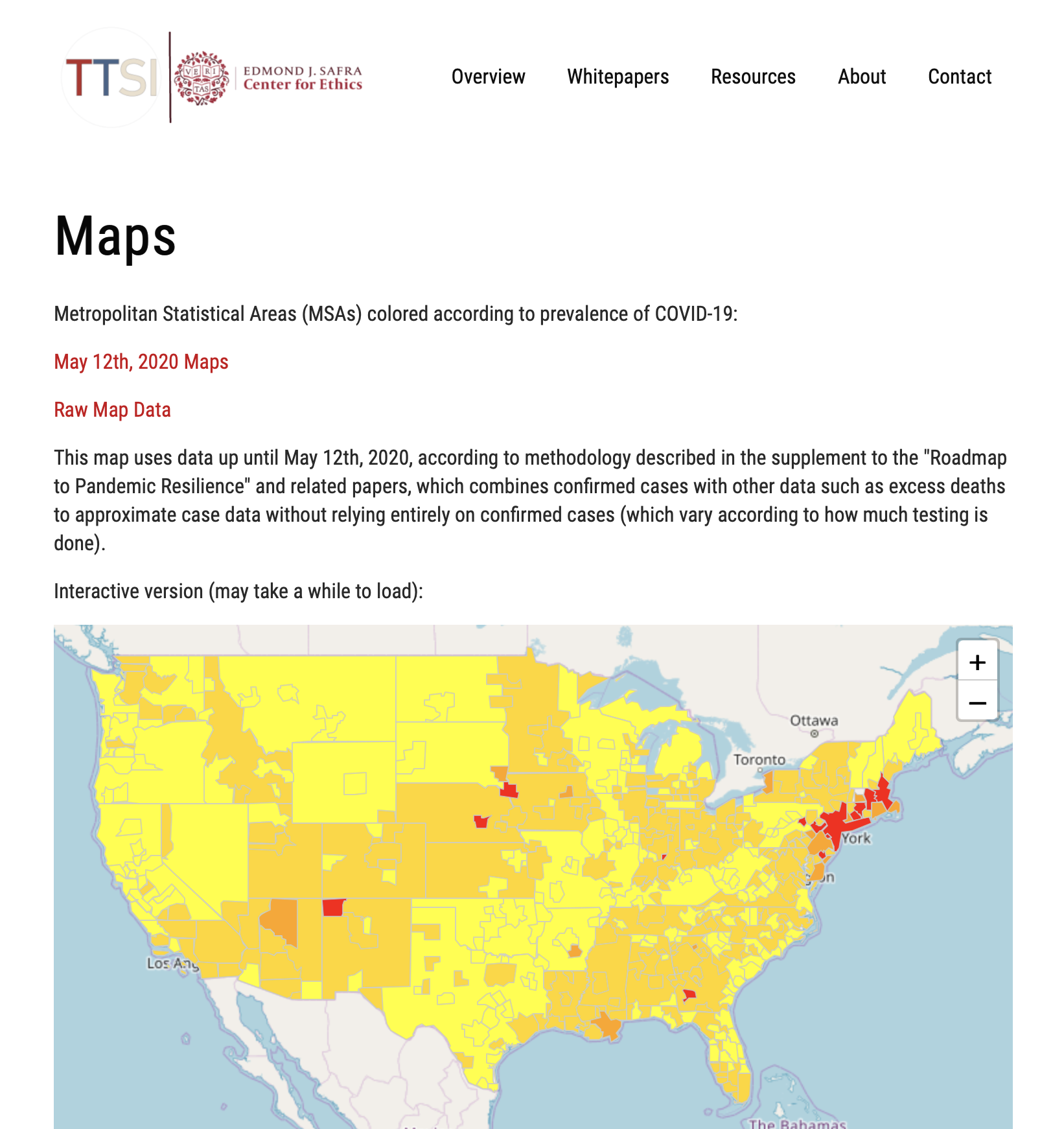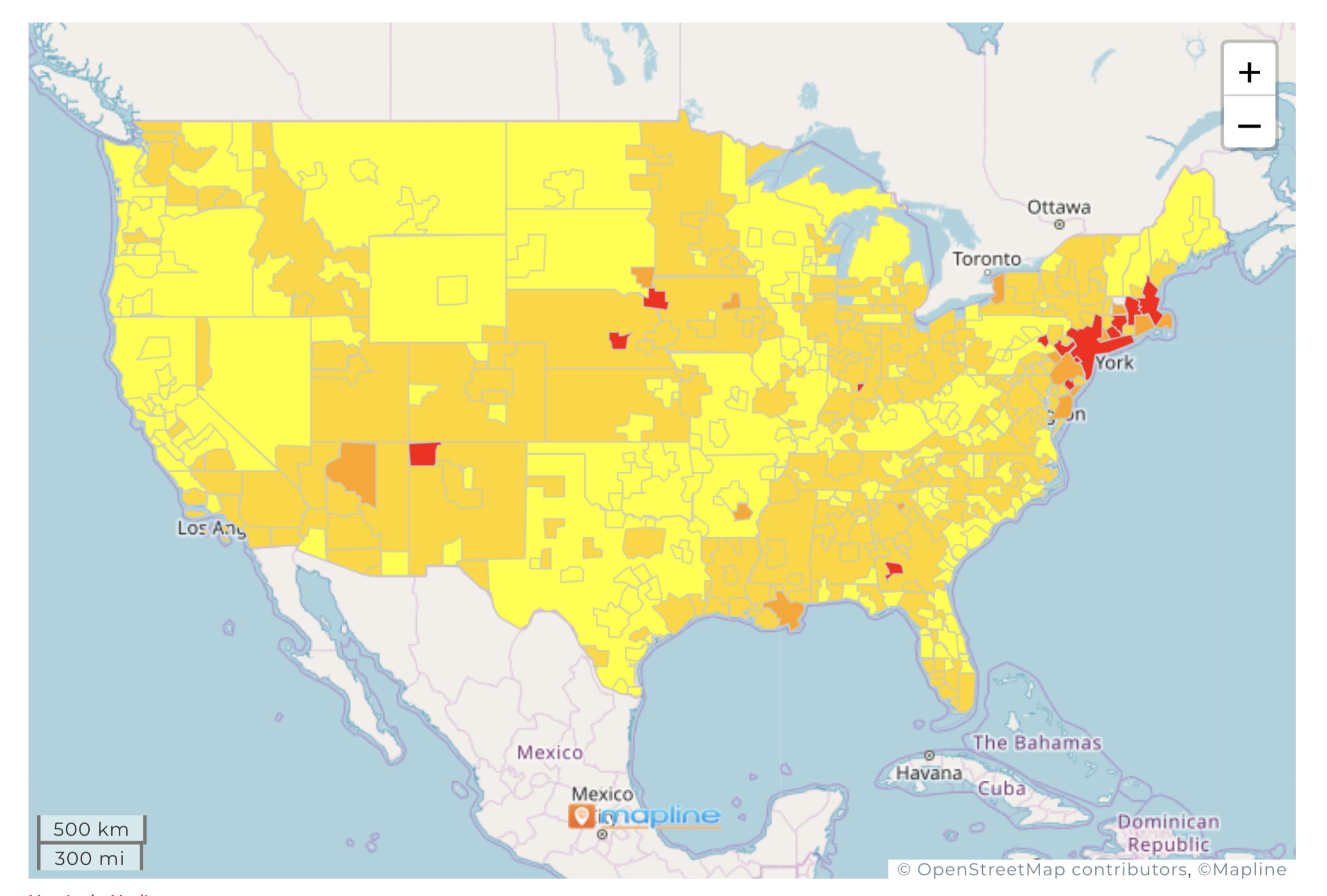The TTSI Plan (a.k.a How to Safely throw a BIG party in just Two Months)
The best plan I’ve seen to date that efficiently opens the economy up, keeps the economy open, and keeps everyone healthy comes from the COVID-19 Rapid Response Initiative. The acronym TTSI above stands for Testing, Tracing, and Supported Isolation which is the key to this plan. Most of this post is devoted to explaining the plan, but first a bit of motivation…
With the right approach here in the Bay Area you could safely throw a large party in a month or two.
With the levels of COVID-19 right now in the Bay Area, if we had the right amount of testing, tracing, and supported isolation (TTSI), the Bay Area could be fully open. And by fully open, I mean fully open. People in the Bay Area would still need to wear masks, but we could have large gatherings and we could have people feeling comfortable enough to walk into and linger in shops.
Realistically in a month or two, with a coordinated ramp up of TTSI, you could be living in a fully open economy and with minimal health risk.
If you live in a region other than the Bay Area, there is a high likelihood that your levels of COVID-19 would permit a similar reopening to the one described above. A reopening in which the economy was able to return to life, while everyone remained healthy. Look to Appendix 1 at the bottom of this post for details on how to determine the specifics of your own situation.
A strong coherent plan built by a diverse multidisciplinary group.
Much of what I talk about in this section comes from a diverse group called “The COVID-19 Rapid Response Initiative”, created under the umbrella of Edmond J. Safra Center for Ethics at Harvard University. This group has created the strongest most coherent plan to reopen our economy and stay healthy that I have seen. This is not an letter to the editor put together with a single perspective on this crisis. The COVID-19 Rapid Response Initiative pulls together public health, economic, legal, political science, and philosophical/ethics expertise.
I discovered the plan because one of my favorite YouTube math geek channels, Vi Hart, is on the panel and had a video discussing it. I will link all of the relevant material from this group at the bottom of this post. The plan is incredibly well thought out, however that also means that it is dense. The purpose of this post is to make the plan accessible to anyone. Please give me feedback on how to make it more accessible and what additional posts about this plan you would like to see.
TTSI is the most efficient path forward until we have a treatment or a vaccine
Any path through this pandemic will have a lot of pain and challenges. Our job is to find the most efficient path. China, Taiwan, New Zealand, Australia, and South Korea have all managed to resurrect their economies while at the same time maintaining the health of their population. All of these countries have accomplished this feat with some variation on the TTSI approach. The work of the COVID-19 Rapid Response Initiative is to adapt this approach to the United States and to help people see how to get there.
At its core, TTSI is what you already know.
To control COVID-19 while at the same time keeping the economy open you need to:
test for COVID-19,
trace the contacts on any tests that came back positive, and
quarantine any individuals identified that might have COVID-19.
The breadth and depth of the work of this group has been to integrate these concepts together and to take each of these concepts beyond their standard scope and scale.
The difference: Use TTSI to quash not just monitor the virus.
To reduce the prevalence of COVID-19 while still having the economy open and increasing everyone’s sense of safety you have to beef up testing, tracing and quarantining.
Testing should return rapid results in high volume. In the Bay Area we shouldn’t be aiming for 200 tests per 100,000 population we should be aiming in the region of 400 tests per 100,000 people. Tests should return results in 12 hours or 24 hours at the most.
Rapid contact tracing that returns results in 24 hours. There should be a team of five people for every new case who should be ready 24 hours a day to reach all contacts of someone who tested positive. They should be able complete their work in 24 hours. These people need to be familiar with the communities that they work with / live in.
Supported Isolation is quarantining on steroids. None of the work and effort above will be successful unless the chain of transmission can be broken. And the chain of transmission can’t be broken unless people who are sick can be convinced to effectively quarantine. The only way you can convince someone to effectively quarantine is to support them. If they are sick they need to know that they and their family will be taken care of. Ideally they need a space separate from their family to isolate themselves in so that no-one else in their family gets sick. The is especially true if there is anyone vulnerable in their family.
Aggressive TTSI gets us out of limbo land.
We are currently stuck between feelings of cabin fever and fear for our health and the health of those around us. Unless the virus is actively and continuously declining we will be stuck in limbo. Without aggressive TTSI action, we will be stuck for at least the next 3 to 4 months seesawing between different degrees of opening up and social isolation. We will be continually stuck balancing between our desire to socialize and our need to feel that our health is secure. Wisely deploying our testing assets, beefing up our contact tracing and helping those who need to quarantine is our short term ticket out of this nightmare.
Resources
Click on any of the images below to take you through to the resources described.
For an easy way in start with this Vi Hart video. Like so much in this pandemic things change quickly and please know that even now it’s a little dated. One of the biggest flaws in the video is the assumption of national action. The authors of the plan have addressed that flaw recently but the video hasn’t been updated.
This webinar discusses the plan and has a lot of great questions and answers.
If you want an interactive map, to see where your area stands follow this link.
Two Whitepapers
Most Recent Whitepaper: If you want to dig deep, this is probably the place to start.
Foundational Whitepaper: If you want to understand everything about the COVID-19 Rapid Response Initiative’s ambition, this is the place to start.
This is the core website if you want to see everything.
Appendix 1: Outside the Bay Area? Figure out for yourself what your life could be like.
Step 1: Find the the color of the region where you live in the map above. For an interactive version of the map follow this link https://www.pandemictesting.org/maps. The color will be either red, orange, light orange, yellow-green, or green. As I write this there is no green in the US although there used to be a couple of weeks ago.
Step 2: Use the color correspondence to the right to match the five colors in the map above to the three colors in the table below. By the way, there used to be green areas of the country but currently there are not any such areas.
| Map Color | Table Color |
|---|---|
| Red | Red |
| Deep Orange | Betwen orange and red zones |
| Light Orange | Yellow tending towards red |
| Yellow | Solidly Yellow Zone |
| Green | There currently is no Green |
Step 3: Look in the columns to see if given proper implementation of TTSI whether you would need to be wearing masks, whether you would be living with stay at home orders, whether there would be a ban on large gatherings.
Step 4: Call your local, state, and national representatives to advocate for more testing, tracing, and supported isolation.
Appendix 2: Deeper Thoughts on TTSI
The brilliance of the COVID-19 Rapid Response Initiative is that they have thought deeply about the exact path we need to walk through this pandemic landscape. They understand the money and time tightropes that we’re walking, https://www.phoenixdataproject.org/insight-not-health-vs-economy,
Testing: How many tests?
What is the right amount of testing? If you run too few tests, you risk a second wave. On the flip side, it is entirely possible to contain the virus and open the economy if everyone gets tested on a regular basis. However, such universal testing is a waste of money and resources. Furthermore, if those testing resources could have been used elsewhere lives were risked and possibly lost. Also, speaking as someone who’s gotten tested recently, while I gladly will take a swab up my nose every week to socialize with my friends, I know I’ll quickly tire of it. As a rough estimate, they currently judge that an appropriate level of testing is when 4% of the tests come back positive.
Tracing: How fast? How many contact tracers? Can an app be used?
Quick contact tracing is crucial if we want to use TTSI to reopen the economy. The COVID-19 Rapid Response Initiative has the ambitious goal of tracing all of someone’s contacts in 12 to 24 hours. They figure out how many contact tracers this would take which depends on what color region you’re in. The longer the delay, the less effective TTSI is for suppression and control, If tracing takes longer than three days, it can’t be used to suppress COVID-19. We can’t rely just on a contact tracing app, but we can use an app to make contact tracing faster and more efficient. The benefit of having lawyers and ethicists in the group that authored the plan is that they have thought through privacy concerns in the context of the US.
Scope and Scale: With national dysfunction what scale works?
Originally, their roadmap was national, which, given the dysfunction of our national government, and the piecemeal approach of state governments, was unworkable. But TTSI can work at any scale and was effectively used in Vo, Italy near the start of the pandemic. The benefit of running TTSI at a regional, state, or national level is that the effort becomes much cheaper and more effective. When a large region can share resources deploying test kits and hospital supplies where needed, fewer total resources are needed and the entire effort of pandemic resilience decreases.







